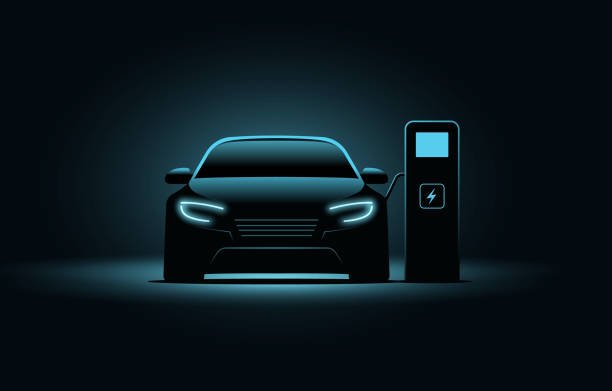-
Introduction: Why EVs Are the Future in India
The electric vehicle (EV) revolution is no longer a distant dream in India — it’s here, buzzing silently across roads, charging stations, and stock market portfolios. With growing concerns around pollution, rising fuel prices, and climate change, India has geared up for an aggressive EV transformation. What was once just a trend is now becoming a national mission — and the government, private players, and investors are all charged up (pun intended).
But is the hype justified? Who’s winning the EV race in India? And most importantly — where’s the money?
Let’s break it down in layers — from market growth, to government support, and the top EV stocks that every smart investor is watching in 2025.
-
India’s EV Market Growth: The Big Picture
🔸Explosive Growth Numbers and Projections
India’s EV market has been growing at a staggering pace. From barely 1 lakh units in 2020 to crossing 16 lakh EV sales in 2024, the growth has been phenomenal. According to industry forecasts, the market is expected to touch Rs. 5 lakh crore by 2030, with EVs forming 30-40% of all vehicles sold.
Why the sudden surge?
Because the average Indian no longer sees EVs as a “luxury experiment.” They’re cleaner, cheaper over the long run, and have become more accessible than ever.
🔸Two-Wheelers Lead the Charge
The EV growth in India is not uniform — it’s two-wheelers and three-wheelers that are dominating the volume game. Companies like Ola Electric, Ather Energy, and TVS iQube are riding the wave. With lower upfront cost and less range anxiety compared to cars, electric scooters and rickshaws are practically owning the market.
In fact, 80% of EV sales in India come from 2-wheelers alone. That’s not a trend — that’s a revolution on two wheels.
🔸Charging Infrastructure: Catching Up Fast
The biggest problem early on? Lack of charging stations.
Now? Not anymore.
India now boasts over 12,000 public charging stations, and that number is climbing fast thanks to government support and private partnerships. From highways to malls to petrol pumps — chargers are popping up everywhere. Even battery swapping is gaining traction for commercial fleets.
This infrastructure boom is what’s powering real, usable EV growth — not just flashy showrooms.
-
The Government Push: India’s EV Policy Powerhouse
🔸FAME Scheme: India’s Flagship EV Subsidy Program
India’s FAME (Faster Adoption and Manufacturing of Hybrid and Electric Vehicles) scheme has been a game-changer.
Under FAME II, the government allocated ₹10,000 crore till March 2024 to subsidize electric vehicles — especially two- and three-wheelers. This subsidy significantly reduces the upfront cost of buying an EV, making it attractive for the middle class.
More than 7 lakh EVs have been subsidized through FAME so far.
And now in 2025? A potential FAME III is on the table — with even higher allocation and deeper incentives, targeting personal cars and commercial fleets.
🔸PLI Scheme for EV Manufacturing
The Production-Linked Incentive (PLI) Scheme has boosted domestic manufacturing of EV components and batteries. With over ₹18,000 crore committed under PLI, India is now building its own gigafactories for lithium-ion batteries and key components.
This is India’s answer to reducing dependence on China and becoming a global EV hub.
🔸State-Level EV Policies
Each state is going all-in with its own EV plans.
👉 Delhi aims for 25% EV penetration by 2024.
👉 Maharashtra offers subsidies up to ₹1.5 lakh.
👉 Tamil Nadu and Telangana are building entire EV industrial parks.
With more than 25 states actively pushing EV policies, India isn’t waiting — it’s sprinting.
-
Why Investors Are Going Crazy for EV Stocks
🔸EV = The New Tech Boom
The EV sector is being seen as the next IT/tech boom in Indian markets. Everyone wants a piece of the future — and this future isn’t 10 years away. It’s now.
Just like IT gave us Infosys, TCS, and Wipro — EV is giving us Tata Motors, Olectra Greentech, and Amara Raja as the next-gen multi-baggers.
EVs are not a “sector” anymore. They’re a megatrend.
🔸Battery = The New Oil
Forget crude oil — lithium is the new king.
Companies that are building battery plants or securing lithium supplies are getting major attention. This includes Exide Industries, Amara Raja Energy, and Ola Electric’s Gigafactory plans.
Everyone knows — whoever controls battery supply, controls the EV world.
-
Top EV Stocks to Watch in India (2025)
🔸1. Tata Motors
Tata Motors is the undisputed leader in India’s EV car segment. Its Nexon EV, Tiago EV, and Punch EV dominate the charts.
The company has already sold over 1.5 lakh EVs, and it plans to launch 10+ new electric models by 2026.
Its aggressive investment in EV R&D and battery tech makes it a blue-chip EV stock you simply can’t ignore.
🔸2. Ola Electric (IPO Watch)
Ola Electric is not listed yet — but its IPO in 2025 is one of the most hyped in recent years.
It already dominates the electric scooter segment with S1 and S1 Air, has its own cell manufacturing plant, and plans to go global.
Once listed, Ola Electric is expected to be India’s Tesla moment.
🔸3. Exide Industries
Exide is transforming itself from a traditional battery maker to a lithium-ion giant. Its JV with Leclanché and upcoming cell manufacturing plant in Bengaluru positions it as a core battery play.
As battery becomes the heart of EVs, Exide becomes a proxy for EV sector growth.
🔸4. Amara Raja Energy
Formerly Amara Raja Batteries, this company is already investing big in lithium-ion plants and energy storage systems.
It’s backed by a legacy of battery dominance and is now pivoting perfectly toward the EV era.
A dark horse stock, but one with serious long-term potential.
🔸5. Olectra Greentech
Want to bet on electric buses? Olectra is your play.
It supplies electric buses to multiple state governments and has a strong order book. With public transport shifting to EVs, this midcap has massive upside potential.
-
Challenges That Still Remain
🔸Charging Infrastructure Gaps in Rural India
While metro cities are covered well, tier-2 and tier-3 cities are still struggling with EV infra. Lack of fast-charging, poor grid reliability, and battery replacement challenges could slow penetration.
This is where government + private partnerships need to step in.
🔸High Initial Cost of EVs
Even with subsidies, EVs are costlier upfront than petrol/diesel vehicles. Until battery prices fall further or finance options improve, price-conscious Indians may hesitate.
Battery-as-a-service, lease plans, and low-cost variants can help solve this puzzle.
🔸Battery Waste & Recycling
As EVs grow, battery waste management becomes a looming issue. India needs robust policies for lithium battery recycling, re-use, and disposal — or we’ll trade oil pollution for battery pollution.
-
The Road Ahead: What to Expect by 2030
India’s EV journey is just starting — and we’re shifting gears fast:
👉 By 2030, India aims for 30% electrification of all vehicles.
👉 Gigafactories will make batteries cheaper and more efficient.
👉 The stock market will continue to reward early adopters of EV manufacturing, charging infra, and battery tech.
And if trends hold, EVs will no longer be “eco-alternatives.” They’ll be the default mode of transport.
-
Conclusion: Invest, Ride, or Miss Out?
India’s EV ecosystem in 2025 isn’t just a shiny new sector — it’s a mega wave with long-term economic, environmental, and financial consequences.
The government is pushing. Consumers are adapting. And investors? They’re already cashing in.
So whether you’re an investor, a policy nerd, or just someone who loves futuristic stuff — the EV space is calling.
And ignoring it? That’s like ignoring the internet in 2000. You’ll regret it later.




